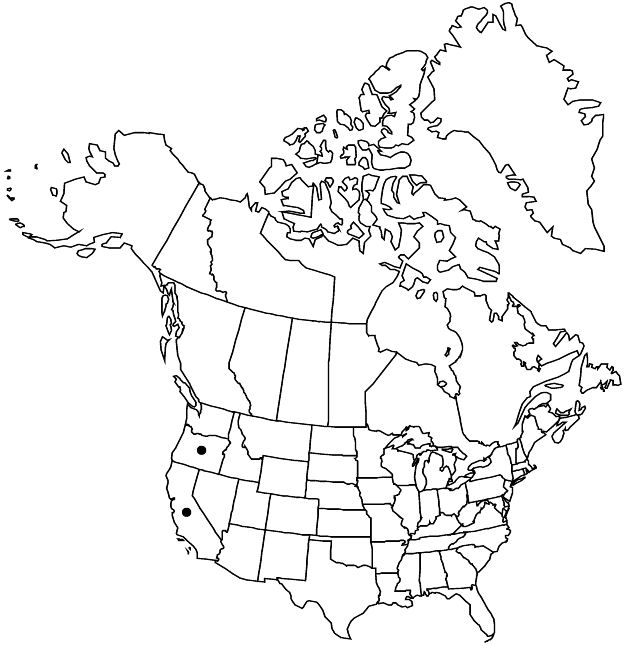Ceanothus parryi
Proc. Calif. Acad. Sci., ser. 2, 1: 109. 1888.
Shrubs, evergreen, 2–6 m. Stems erect or ascending, not rooting at nodes; branchlets grayish green to brown, not thorn-tipped, usually round, sometimes ± angled, in cross-section, flexible, lanate to woolly, glabrescent. Leaves: petiole 1–8 mm; blade flat to slightly cupped, oblong or ± elliptic, 12–50 × 6–20 mm, base obtuse to rounded, margins entire or obscurely glandular-denticulate, narrowly revolute, glands 21–36, apex obtuse, abaxial surface green, cobwebby, soon glabrescent, adaxial surface dark green, shiny, villosulous, glabrescent; usually 3-veined from base, rarely pinnately veined. Inflorescences axillary or terminal, paniclelike, 5–15 cm. Flowers: sepals, petals, and nectary deep blue. Capsules 2.5–4 mm wide, lobed; valves smooth, not or weakly crested. 2n = 24.
Phenology: Flowering Apr–May.
Habitat: Rocky soils, open sites, flats, mixed evergreen and redwood forests.
Elevation: 30–800 m.
Discussion
Ceanothus parryi occurs in the outer coast ranges of Oregon (Benton and Lane counties) and from Humboldt County south to Napa County in California; it is reported to hybridize with C. foliosus, C. incanus, and C. thyrsiflorus (H. McMinn 1944). The deep blue sepals and petals, cobwebby indumentum on young leaves, and narrowly revolute leaf margins are diagnostic.
Selected References
None.
Lower Taxa
"thin" is not a number.
